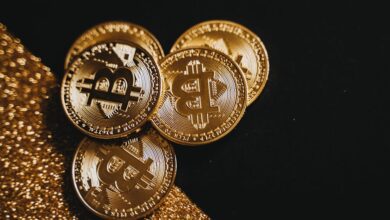Monitoring Metal Prices and Trends: A Comprehensive Guide to Market Movements and Price Forecasts for Precious and Industrial Metals

In a world where the demand for metals continues to surge, understanding the intricacies of metal prices and trends is crucial for investors, manufacturers, and consumers alike. From precious metals like gold and silver to industrial metals such as copper, aluminum, and zinc, the market's movements can significantly impact various sectors, including construction, automotive, and aerospace. As we navigate the complexities of metal mining and metallurgy, it becomes essential to monitor how factors like metal recycling and sustainable production influence market dynamics. Additionally, emerging technologies such as 3D printing and the growing need for battery metals, like lithium, are reshaping the landscape of metal commodities. This article delves into the key trends in both precious and industrial metals, explores the implications of metal recycling, and offers future forecasts for investing in these valuable resources. Whether you are interested in gold investing, silver investing, or the potential of rare earth metals, understanding these trends will better equip you to make informed decisions in the evolving metals market.
- 1. Understanding Metal Prices: Key Trends in Precious and Industrial Metals
- 2. The Impact of Metal Recycling and Sustainable Production on Market Dynamics
- 3. Future Forecasts: Investing in Gold, Silver, and Emerging Metal Commodities
1. Understanding Metal Prices: Key Trends in Precious and Industrial Metals
Understanding the dynamics of metal prices is essential for investors, manufacturers, and consumers alike. The market for metals can be broadly categorized into two main segments: precious metals and industrial metals. Precious metals, such as gold and silver, are often viewed as safe-haven investments, especially during economic uncertainty. Investors in gold and silver often look at historical trends, geopolitical factors, and inflation rates to make informed decisions.
On the other hand, industrial metals, including aluminum, copper, and zinc, play a crucial role in various sectors, from construction to automotive industries. The demand for these base metals is influenced by economic growth, technological advancements, and sustainability initiatives. For instance, the rise in electric vehicles has significantly boosted the need for battery metals like lithium and cobalt, while the construction sector continues to drive demand for construction metals such as steel and aluminum.
Another significant trend is the growing focus on metal recycling and sustainable metal production. As industries strive to minimize their environmental impact, the recycling of ferrous and non-ferrous metals has become increasingly important. This shift not only helps conserve resources but also reduces metal corrosion and waste.
Additionally, the emergence of innovative technologies such as 3D printing has opened new avenues for metal fabrication. This process allows for the creation of complex metal alloys and structures, leading to a more efficient use of materials and reduced costs in sectors like aerospace and automotive.
Rare earth metals also deserve attention as they are critical for high-tech applications, including electronics and renewable energy technologies. The volatility in their prices can be attributed to geopolitical tensions and supply chain challenges, making it crucial for stakeholders to monitor these metal trends closely.
Overall, understanding the interplay between various factors influencing metal prices—from mining activities to market demand and technological advancements—can provide valuable insights for those involved in metal commodities, whether for investment or industrial purposes. Keeping an eye on these trends will be essential for navigating the complex landscape of the metals market.
2. The Impact of Metal Recycling and Sustainable Production on Market Dynamics
The impact of metal recycling and sustainable production on market dynamics is increasingly significant as industries seek to balance economic growth with environmental responsibility. The continuous demand for both precious and industrial metals, such as gold, silver, copper, and aluminum, has led to a heightened focus on sustainable practices. Metal recycling plays a crucial role in this equation by providing a reliable source of materials that can reduce the need for new metal mining, thereby decreasing environmental degradation and energy consumption associated with extraction.
Recycling ferrous and non-ferrous metals, including steel, zinc, and lithium, not only conserves natural resources but also helps stabilize market prices. When metals are recycled, they can be reintroduced into the supply chain at a lower cost compared to newly mined materials. This can lead to more competitive pricing in the metal commodities market, ultimately benefiting industries such as construction, automotive, and aerospace, where metal fabrication is paramount.
Furthermore, the rise of sustainable metal production is influencing the overall market dynamics. Companies are increasingly adopting practices that prioritize metallurgy innovations, such as using recycled materials in metal alloys and developing eco-friendly processes for metal corrosion prevention. This shift not only enhances the sustainability of products but also meets the growing consumer demand for environmentally responsible options, particularly in sectors like jewelry, energy, and battery production.
In addition, the emergence of advanced technologies, such as 3D printing metals, is changing how metals are sourced and used. This innovation allows for the efficient use of materials, reducing waste and promoting the use of recycled metal inputs. As industries adapt to these trends, the interplay between metal recycling and sustainable production will continue to shape the future of metal markets, influencing price forecasts and investment strategies in metals like platinum, palladium, and rare earth metals.
Overall, the integration of metal recycling and sustainable production practices is not only crucial for environmental stewardship but is also a driving force in the evolving landscape of metal prices and trends. As investors consider opportunities in gold investing, silver investing, and other metal commodities, understanding these dynamics will be essential for making informed decisions in a rapidly changing market.
3. Future Forecasts: Investing in Gold, Silver, and Emerging Metal Commodities
The future of metal prices and trends is influenced by a myriad of factors, including global economic conditions, technological advancements, and shifts in consumer demand. As investors look to diversify their portfolios, understanding the dynamics of precious metals like gold and silver, along with emerging metal commodities, becomes crucial.
Gold investing continues to attract attention as a safe-haven asset, especially in times of economic uncertainty. With inflation concerns and geopolitical tensions, many investors turn to gold as a hedge against market volatility. Its enduring value, coupled with increasing demand for gold in jewelry and electronics, suggests a stable outlook for this precious metal.
Silver investing also holds promise, particularly as industrial demand rises. Silver's unique properties make it indispensable in various sectors, including solar energy and electronics. As the push for sustainable metal production intensifies, silver’s role in green technologies, such as photovoltaic cells, is expected to drive its demand higher, making it a strong contender among metal commodities.
Emerging metal commodities, particularly lithium, platinum, and palladium, are gaining traction as the world shifts towards renewable energy and electric vehicles. Lithium, essential for battery production, is witnessing a surge in demand as the automotive industry pivots to electric vehicles. This trend underscores the importance of battery metals in the future landscape of metal investing.
Additionally, rare earth metals are becoming increasingly valuable due to their critical role in advanced technologies and defense applications. With the rise of 3D printing metals and metallurgy innovations, the recycling of these metals is also gaining importance, contributing to more sustainable practices in metal mining and fabrication.
Investors should also keep an eye on industrial metals like copper and aluminum, which are crucial in construction and infrastructure. As global economies recover and industrial activity ramps up, these base metals are poised for growth. Moreover, advancements in metal alloys and the development of refractory metals can further enhance performance in high-demand applications across various industries, including aerospace and automotive.
In conclusion, the future of metal trends is shaped by a blend of traditional precious metals and innovative commodities. By staying informed about market movements and potential forecasts, investors can strategically position themselves in a landscape that is increasingly leaning towards sustainability and technological advancement.
In conclusion, understanding the intricacies of metal prices and trends is crucial for anyone involved in the mining, manufacturing, or investment sectors. As we have explored, both precious and industrial metals play a pivotal role in the global economy, influenced by factors such as metal recycling and sustainable production practices. The growing importance of rare earth metals and battery metals highlights the need for innovative approaches in metallurgy and metal fabrication to meet the demands of emerging technologies.
Looking ahead, gold investing and silver investing remain appealing options for investors, while base metals like copper, aluminum, and zinc are expected to experience volatility due to market dynamics and global demand shifts. Additionally, the rise of 3D printing metals and advancements in metal alloys are transforming industries such as aerospace, automotive, and construction, offering new avenues for growth and efficiency.
To stay ahead in this ever-evolving landscape, it is vital to monitor metal trends, assess price forecasts, and adapt strategies accordingly. By embracing sustainable metal production and recycling initiatives, stakeholders can not only optimize their investments but also contribute to a more environmentally responsible future in the metal commodities market. As the landscape continues to shift, informed decisions will be key to navigating the complexities of metal prices and ensuring long-term success.
References:
– [Include relevant sources in APA format]





